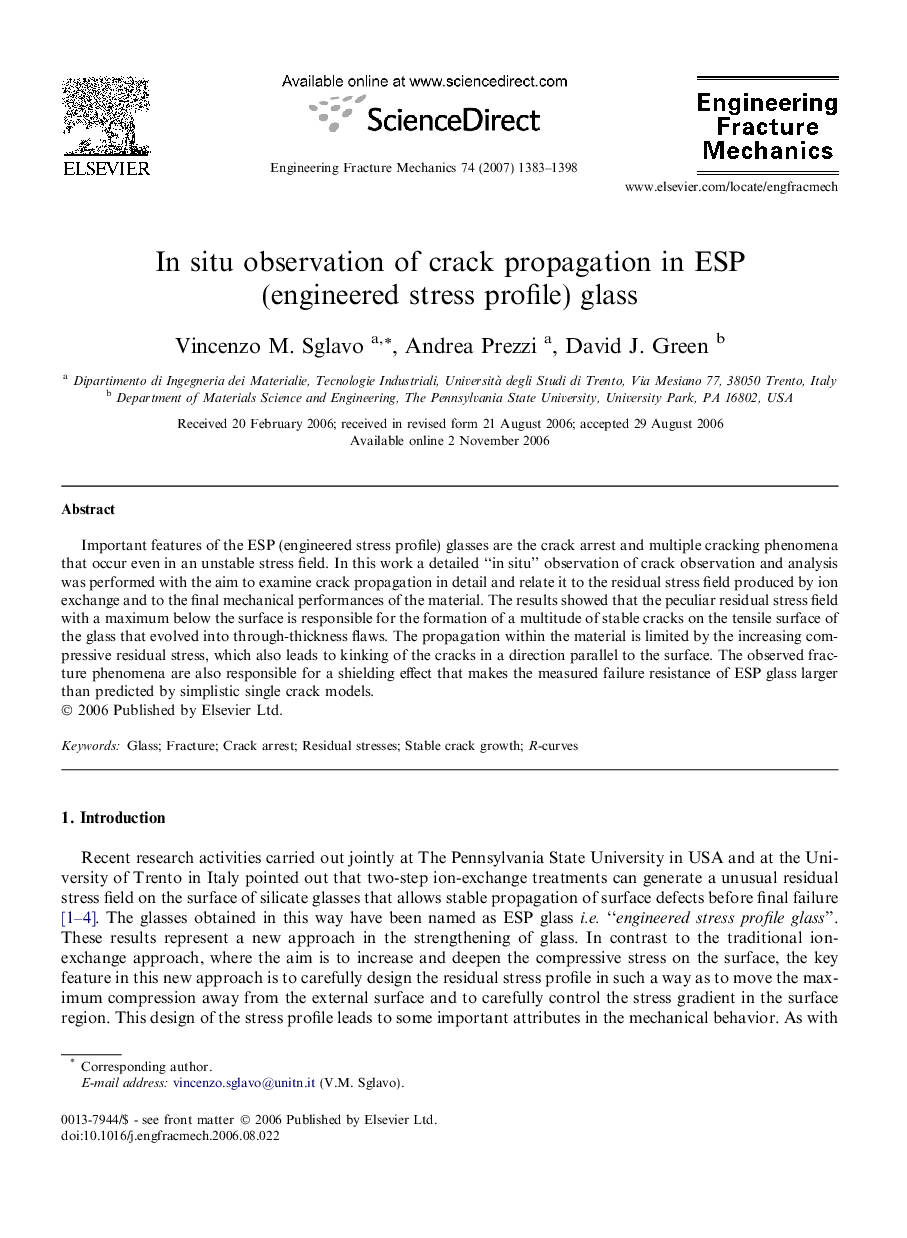| Article ID | Journal | Published Year | Pages | File Type |
|---|---|---|---|---|
| 771586 | Engineering Fracture Mechanics | 2007 | 16 Pages |
Important features of the ESP (engineered stress profile) glasses are the crack arrest and multiple cracking phenomena that occur even in an unstable stress field. In this work a detailed “in situ” observation of crack observation and analysis was performed with the aim to examine crack propagation in detail and relate it to the residual stress field produced by ion exchange and to the final mechanical performances of the material. The results showed that the peculiar residual stress field with a maximum below the surface is responsible for the formation of a multitude of stable cracks on the tensile surface of the glass that evolved into through-thickness flaws. The propagation within the material is limited by the increasing compressive residual stress, which also leads to kinking of the cracks in a direction parallel to the surface. The observed fracture phenomena are also responsible for a shielding effect that makes the measured failure resistance of ESP glass larger than predicted by simplistic single crack models.
